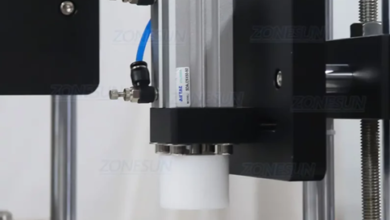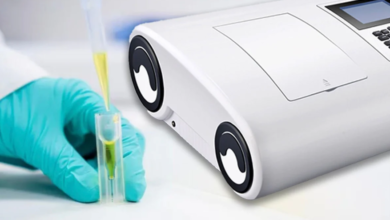
What is the Process of Filling Machine?
With today’s rapidly changing manufacturing industry, packaging efficiency is paramount. A filling machine plays a major role in getting the product measured accurately, filled safely, and packaged uniformly. No matter if the machine is applied in the food and beverage industry, pharmaceutical industry, or cosmetics industry, the filling guarantees product integrity along with production speed.
So, what exactly is a filling machine process? Let us find out more on how it is done, the different types of machines, and why the automatic liquid filling machine process is used as widely in today’s production lines.
What is a Filling Machine?
Filling machine is a type of packaging machinery that fills a package with a measured amount of product. A package may be a bottle, jar, can, tube, or pouch, and products may be liquids and powders, creams, or granules.Filling machines are also referred to as manual, semi-automatic, or automatic filling machines depending on the level of automation and production need.
The Process of a Filling Machine
Although there are different types of filling machines, the general process usually involves six main steps:
1. Container Feeding
Empty containers are loaded into the system via a conveyor or manually in smaller setups. Automated systems align and feed containers to the filling station with high precision.
2. Container Positioning
The machine positions each container under the filling nozzle to ensure no spillage or misalignment occurs. Some systems use sensors to detect the container before filling begins.
3. Product Filling
This is the core step. The machine dispenses the exact product amount into the container. Different filling techniques are used:
- Gravity Filling – Suitable for thin, free-flow liquids such as water or juice.
- Piston Filling – Suitable for thick liquids such as ketchup, sauce, or creams.
- Vacuum Filling – Common in sensitive products such as wine and essential oils.
- Auger Filling – Used for powders such as spices, milk powder, or flour.
For mass production, automatic liquid filling machine is the most efficient process. It uses advanced pumps or pistons for speed and accuracy with minimal wastage and error..
4. Level Checking & Quality Control
Liquid levels, weight, or volume are checked by sensors and inspection systems in contemporary filling machines. Containers that do not match specifications are automatically rejected.
5. Capping and Sealing
After filling, containers are conveyed to the capping station where lids, caps, or seals are put on. This is to prevent leakage and for product safety.
6. Labeling and Final Packaging
In fully automatic lines, labeling machines and packing systems are integrated with the filling operation. This provides a high-speed one-stop packaging solution from start to finish.
Types of Filling Machines
Different industries require different machines. The most common types include:
- Liquid Filling Machines – For beverages, oils, and chemicals.
- Powder Filling Machines – For flour, coffee, or pharmaceutical powders.
- Paste Filling Machines – For sauces, creams, and gels.
- Granule Filling Machines – For rice, beans, or nuts.
- Automatic Filling Machines – Fully automated, suitable for large-scale production.
- Semi-automatic Filling Machines – Balance between manual control and automation.
Advantages of Using a Filling Machine
- Efficiency – Increases production speed dramatically.
- Accuracy – Guarantees precise measurements and reduces product waste.
- Versatility – Handles liquids, powders, pastes, and granules.
- Consistency – Every container has the same fill level, improving brand image.
- Hygiene & Safety – Reduces human contact, vital for food and pharmaceuticals.
- Cost-Effectiveness – Automation reduces labor costs over time.
Automatic Liquid Filling Machine Process in Detail
The automatic liquid filling machine process is one of the most advanced packaging solutions. It generally follows these steps:
- Bottle feeding system automatically loads and arranges containers.
- No-drip nozzles offer sanitary filling without spilling.
- Capping units automatically apply caps tightly.
- Labeling and batch coding systems complete the process.
This process is widely used in water bottling plants, juice factories, and pharmaceutical liquid packaging.
Conclusion
A filling machine process is a combination of speed, precision, and automation for effective packaging. From container feeding to the ultimate labeling, every process is designed keeping precision and consistency in mind. Particularly the automatic liquid filling machine process has transformed industries in eliminating wastage, improving hygiene, and realizing maximum production efficiency.




